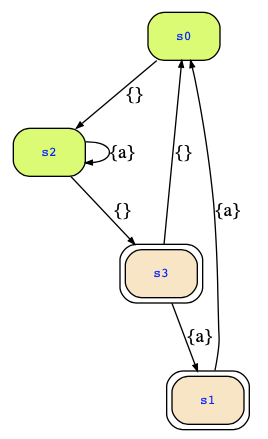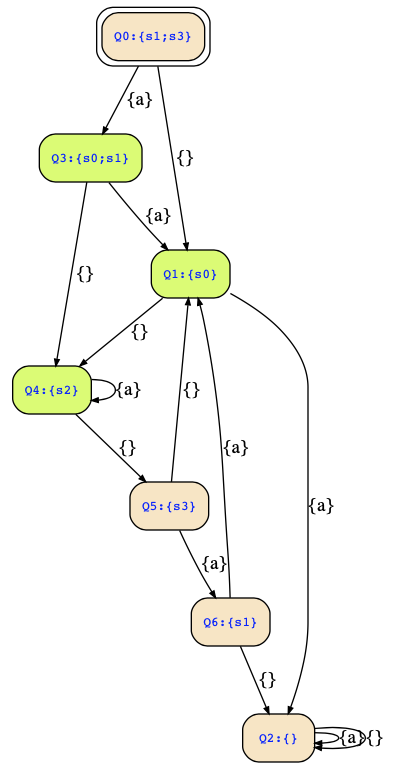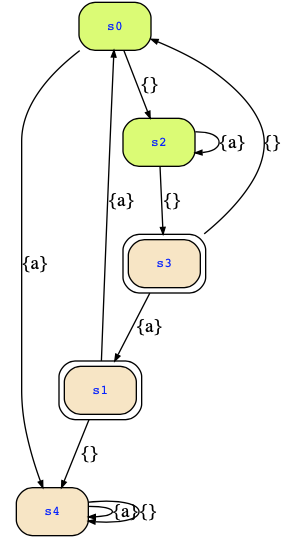I don't find a real error in your computation, but you have not done what you should do (I will come to that later).
First, I computed the same automaton; when using the input
inputs {a},{};
init 1,3;
transitions
(0,{},2);
(1,{a},0);
(2,{a},2); (2,{},3);
(3,{a},1); (3,{},0);
accept 0,2;
we obtain the following automaton (which is the given one):

You applied the Rabin/Scott construction to the above automaton and as far as I can say, you have done that correctly, at least I obtained the following similar deterministic automaton:

which is exactly what you had.
The exercise text is unfortunately somewhat broken, but it seems that it wants to you follow the idea to first make the given liveness automaton totally defined by adding a sink state so that then the Rabin/Scott construction can be applied. Adding such a sink state may change the language of the automaton, but you should not care about this and should still do that here.
So, the first step would be adding a sink state, which converts the given (partially defined) liveness automaton into the following one (where a sink state s4 has been added):

Is is encoded by the following text:
inputs {a},{};
init 1,3;
transitions
(0,{},2); (0,{a},4);
(1,{a},0); (1,{},4);
(2,{a},2); (2,{},3);
(3,{a},1); (3,{},0);
(4,{a},4); (4,{},4);
accept 0,2;To mimic the accepting paths of the given automaton we now have to use the acceptance condition that states that we should never be in the sink state s4, but we must at least once reach one of the states s0 or s2.
Now you should apply the Rabin/Scott construction to the above automaton and the result should be submitted where the unsafe state should be the one that corresponds with the sink state. I leave the rest up to you.